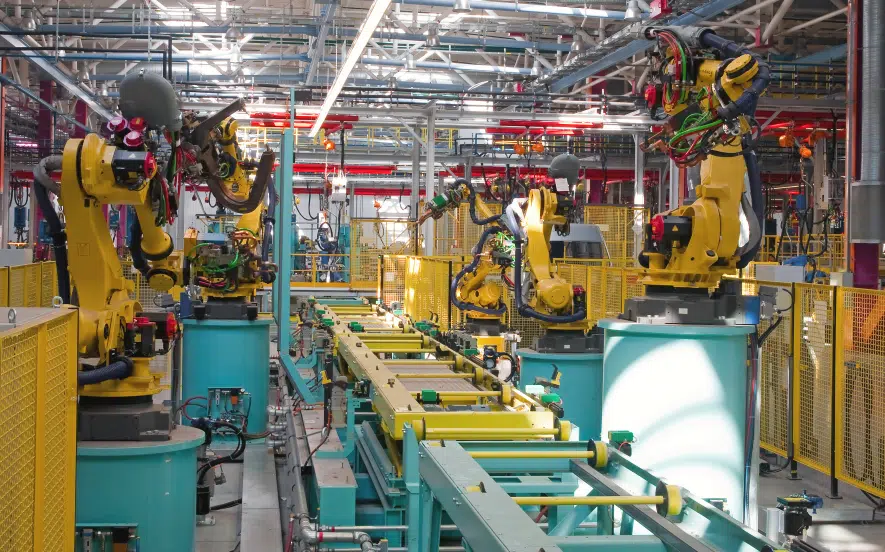Body-in-white
Welding and joining of car body structures
VC of industrial robots
Car body structures are assembled using various welding and joining processes. This is mainly carried out by industrial robots. For virtual commissioning (VC), it is therefore essential to be able to simulate these robot systems in real time. The WinMOD-SIMLINE system offers extensive 3D robot libraries from all well-known manufacturers. The real robot programmes run in their manufacturer-specific applications, which are linked online to the WinMOD simulation system. Axis values and PLC robot signals are exchanged in real time via this high-performance connection.
We call this concept WinMOD Co-Simulation, and you can find details about it on our products page. Together with the coupling of the system control, a virtual system is created that enables complete commissioning of the control and robot software. WinMOD thus brings the control developer and the robot programmer together early on in the project, so that they can jointly develop optimal solutions, but each can work in their familiar area of expertise.


Welding, handling, conveyor technology
For a complete VC of the many processes such as spot, laser or stud welding, MAG/MIG, stamp riveting (SPR), clinching or structural bonding, all other devices and machines must of course also be simulated, starting with welding tongs and bonding devices, through clamping and gripping devices, to circulating conveyors or tool stations. WinMOD-SIMLINE offers 3D libraries of these elements that simulate component processing, assembly and transport in real time. You can also integrate your 3D CAD data from your design tools or OLP programmes.
In addition to these design aspects, WinMOD also accurately simulates hydraulic, pneumatic, drive and sensor behaviour. To do this, you import the hardware configurations directly from your control system and then connect the plant signals to virtual devices from the extensive WinMOD libraries.
Further automotive engineering solutions
Production area in which structural body parts and outer skin parts are produced from sheet metal coils or cut-to-size blanks (blanks) by cold or hot forming – from the raw blank to the ready-to-install formed part.
Assembles stamped/formed sheet metal parts, extruded and cast components into a dimensionally accurate body structure – with defined geometry, rigidity, crash and NVH performance as the basis for the paint shop and final assembly.
Highly automated plant chains for surface pre-treatment, coating and curing of car bodies and add-on parts – designed for high throughput, reproducible appearance and corrosion protection.
Pre-assembly of front/rear axle modules as carriers for chassis, steering and drive units such as combustion engines, powertrains or electric axles. Transport to the sequenced handover to the „marriage“ with the body.
Highly automated process chain for the fabrication of traction batteries – from electrode production to cell assembly and forming to module/pack assembly
This area of technology encompasses conveyor systems that transport and sort pallets and mesh boxes containing automotive components. The conveyor elements are large roller and chain conveyors combined with lifting, rotating and shifting tables.
Fully automated high-bay warehouses, which are operated by light or heavy-duty storage and retrieval machines and controlled by distributed automation systems. Warehouse management systems generate the orders for storing and retrieving raw components or complete car bodies.
Ground-based conveyor technology in which car bodies or heavy modules are transported on standardised SKIDs (steel frames with vehicle-specific support points) through assembly, paint shop and buffer areas.
Overhead conveyor systems with electrically driven, individually controllable trolleys on monorail tracks for low or high loads (up to tonnes).
Ground-based conveyor technology in which car bodies or heavy assemblies are moved on platforms along rails. The drive is typically provided by friction wheels, push chain conveyors or push beams, which continuously push the SKIDs forward.